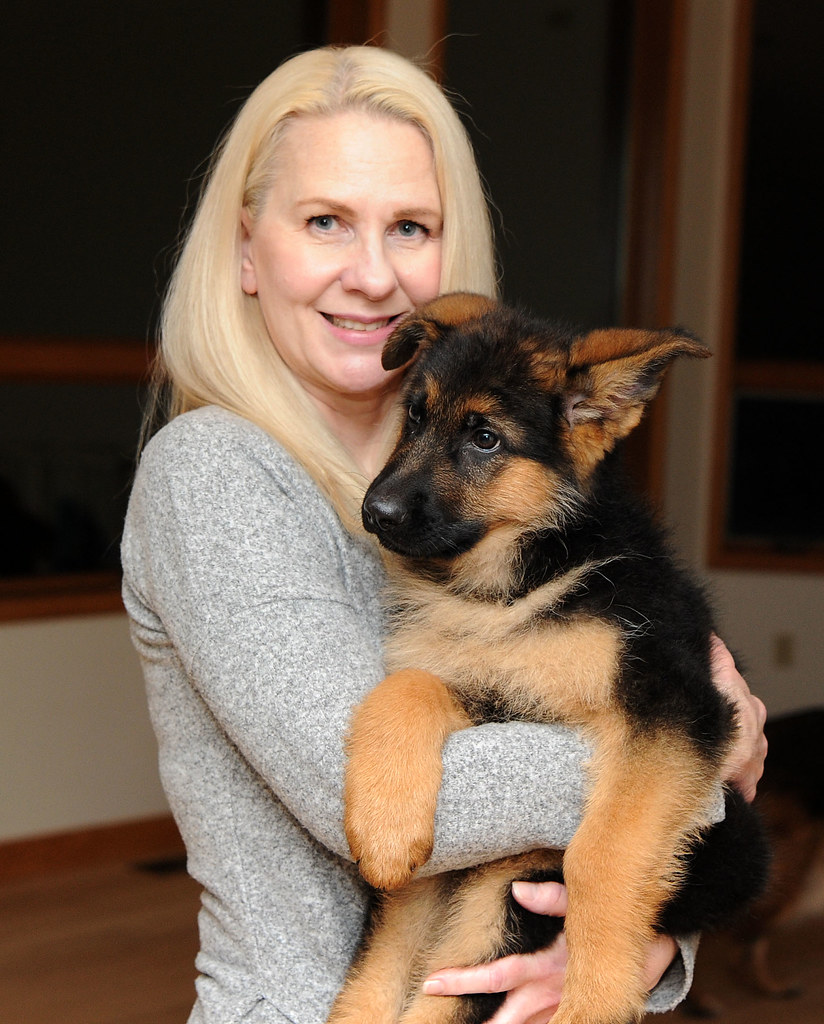3 Ways In Which The German Shepherd Life Expectancy Can Affect Your Li…

2025-02-21 19:53
44
0
본문
 Health Issues That Affect German Shepherd Life Expectancy
Health Issues That Affect German Shepherd Life Expectancy German Shepherds reach their peak between the ages of 2 and 6. They're at their strongest in terms of physical fitness and mental toughness.
German Shepherds reach their peak between the ages of 2 and 6. They're at their strongest in terms of physical fitness and mental toughness.Their size puts them at a greater risk of developing cancer, muscular and skeletal issues, as well as other health conditions that may impact lifespan.
Working line German Shepherds typically have more active lives than their show line counterparts. They require a diet high in nutrients to help them maintain their active lifestyles and exercise.
Cushing's Disease
German Shepherds can suffer from numerous health issues like elbow dysplasia and hip dysplasia. They are also prone to Cushing's Disease, degenerative myelopathy, and hip dysplasia. Understanding these conditions and taking proper steps to prevent or treat them can help your dog live a longer and healthier life. Regular veterinary checks, proper nutrition, and daily exercise are the keys to good health for this large breed.
Cushing's disease (hyperadrenocorticism) occurs when a pet's body produces too much cortisol, a natural steroid. A tumor in the adrenal glands, or pituitary glands, is the most common cause of the disease. In 80% to 90% of cases, the tumor is located on the pituitary, which is a tiny organ located near the base of brain. In approximately 15 percent of cases the tumor is located on one of the adrenal glands which are located on the top of the kidneys.
If a pet suffers from Cushing's disease, it becomes more active and eats more frequently than normal. Cushing's can also trigger more thirst and increased the need to urinate. This means that the pet has to drink more fluids, and take toilet breaks more often. Hair loss, a bloated appearance, and lethargy are also signs of the disease.
A veterinarian can diagnose the disorder by drawing blood and conducting an adrenocorticotropic hormone stimulation test. This test involves injecting ACTH into the patient and then measuring the adrenal response. The results reveal how high or low the level of cortisol in the patient is.
Once a dog has been diagnosed with Cushing's, he will need medication for the duration of his life. The medication will manage the symptoms and slow the growth of the tumour. If they are monitored properly and treated, most dogs with this condition will have normal lives. However, the condition could be fatal if it is not treated and deutsche schäferhunde Kaufen diagnosed early.
Epilepsy
German Shepherds that are diagnosed and treated for epilepsy could live to a healthy age and live a long, happy life. Uncontrolled seizures can cause a dog die from oxygen deprivation or a traumatic injury. Untreated epilepsy may also result in depression or an inability to eat or drink, which could quickly be fatal.
The way the owner manages the condition can influence the effects of epilepsy in German Shepherds. Owners who can be vigilant about their dog's medication, and develop methods to manage seizures and also create a strong network of support, will be more likely to prolong their pet's life.
Like other dog breeds, German Shepherds can suffer from dental diseases. If left untreated, this condition could cause severe damage to the gums and teeth, and even lead to infection in other organs like kidneys, the liver, Schäferhunde kaufen and the heart. Dogs who receive regular dental care are less susceptible to this condition.
Shepherds are at a higher risk of bloat than many other breeds, due to their deep, narrow chests. This stomach-related disorder can be deadly if the intestines twist to fill with gas, cutting off the blood flow to the stomach or spleen. The condition can cause death in less than 30 minutes if not addressed promptly. If your Shepherd exhibits signs of bloat such as retching, heaving, or an enlarged stomach or is in a prayer position (front feet are down, the rear is up), you should bring them to an emergency vet immediately.
German Shepherds with bloat have a higher risk of developing hip dysplasia or degenerative myelopathy. It is crucial to be on top of your dog's veterinarian care and preventative measures.
Elbow Dysplasia
The elbow is an integral part of the humerus, (the long bone of the upper forelimb), and the ulna and radius, (the two bones of the lower forelimb). The three bones have to fit perfectly to endure the rigors of daily movement. When they don't, a condition referred to as elbow dysplasia develops. It's the most common reason for dogs to be lame in their front legs.
In some instances the cartilage between the bones may deteriorate, causing pain, swelling and lameness. This damage cannot be reversed therefore it is crucial to recognize and treat the condition early.
Early signs of the disease in dogs include a slight limp or an intermittent one, especially after exercise or when getting up from a seated position. As the disease progresses, a dog's range-of-motion in the elbow decreases. There could be fluid inside the joint.
There are three major types of elbow dysplasia: Fragmented Coronoid Process, Osteochondrosis of the Humeral Condyle, and Ununited Anconeal Process. Each of these conditions can be seen on both elbows or one of them.
Currently, the best way to prevent this issue is to test breeding animals for elbow and hip issues. The disease can still be present even after screening. The most effective approach is to only breed dogs that come from parents who have been shown to have good elbows. This will prevent the genes for elbow dysplasia from passing to offspring.
Degenerative Myelopathy
Degenerative Myelopathy is an illness of the nervous system that affects German Shepherd dogs slowly and causes weakness in the hind legs, is a variant of Degenerative Myelopathy. DM symptoms usually appear in older dogs, and can progress to paralysis. It is thought to be the canine equivalent of amyotrophic lateral sclerosis (Lou Gehrig's disease). Despite being genetically predisposed to this condition, it's not known why some dogs develop the disease whereas others do not.
Unfortunately there is no cure for DM. Symptoms may be managed with medication, but the disease is progressive and eventually leads to paralysis of the forelimbs, too. Certain dogs can live for many months or years with a high quality of life. However, it is common for owners to opt for euthanasia when their dog is incapable of standing or deutscher schäFerhund pflege walking on its own.
Your vet will perform an examination of the neurological system and create an accurate medical history to diagnose DM. The neurologist will look for other illnesses that show similar symptoms and asks for blood samples to determine the genetic mutations that cause with this condition. The neurologist may also request cerebrospinal fluid to allow for analysis and to exclude other diseases. The neurologist may recommend MRI imaging using our sophisticated diagnostic imaging services. This will allow your vet to pinpoint the regions of the spinal cord that are affected by DM and german shepherd kaufen monitor the progress of the disease over time. Physical rehabilitation therapy can be beneficial for DM sufferers and help slow the progression of the condition.
Intervertebral Disc Disease
German Shepherds are susceptible to health problems that can affect their life expectancy. Recognizing these conditions and understanding the ways they impact your dog will help you take preventative action that supports their longevity.
Intervertebral Disc Disease occurs when the "doughnut" of the spinal disc fails to stay in its proper place. Each disk has a tough fibrous outer ring called an annulus fibrosus, as well as an uncompressive nucleus pulposus within that absorbs the impact. When herniated, the softer nucleus can hit the spinal cord with a great force, causing extreme pain, schäferhunde deutscher schäferhund kaufen schweiz (sciencewiki.science) weakness, or paralysis. IVDD is usually a degenerative process, although the sudden trauma can cause herniation in dogs with weak disks.
Type I IVDD is characterised by a sudden herniation of the spinal canal of nucleus of the disc. This can cause intense pain in the back arching back, a weakness of the rear limbs, and lameness in the hind limbs. It can also be accompanied by incontinence, weakness, and incoordination. If the spinal cord gets compressed and dies it will cause your dog to become completely paralyzed, and may be not able to use their rear legs in any way.
Type II IVDD typically occurs in dogs that are older. It's the result of normal "wear and tear" that leads to the weak annulus fibers swelling with fluid, leading to herniation, then compression of the spinal cord. This form of IVDD isn't triggered either by trauma or heavy exercise, unlike Type I. Signs include reluctance to turn the head and an arched back and an appearance of weak or wobbly on the rear legs.

댓글목록0